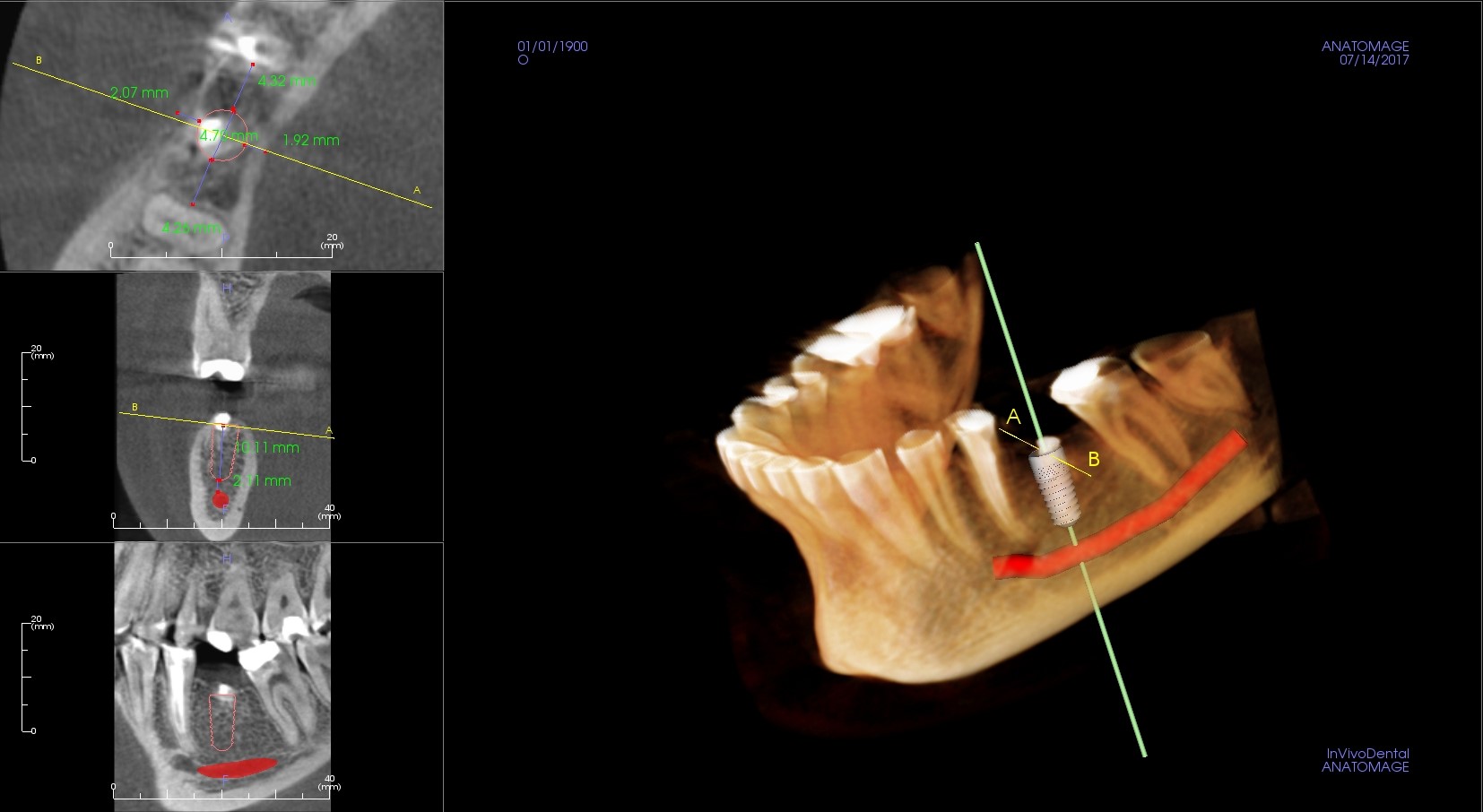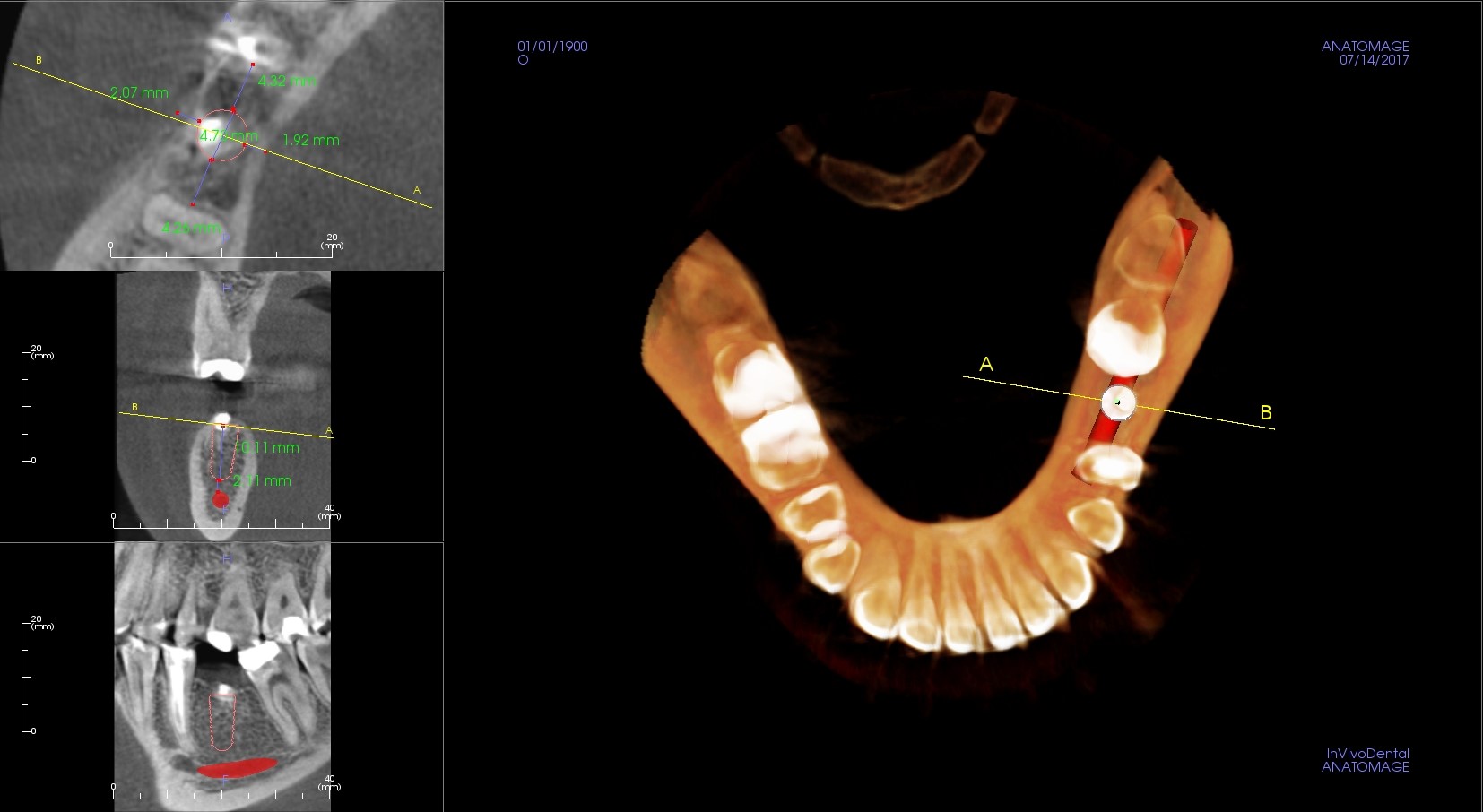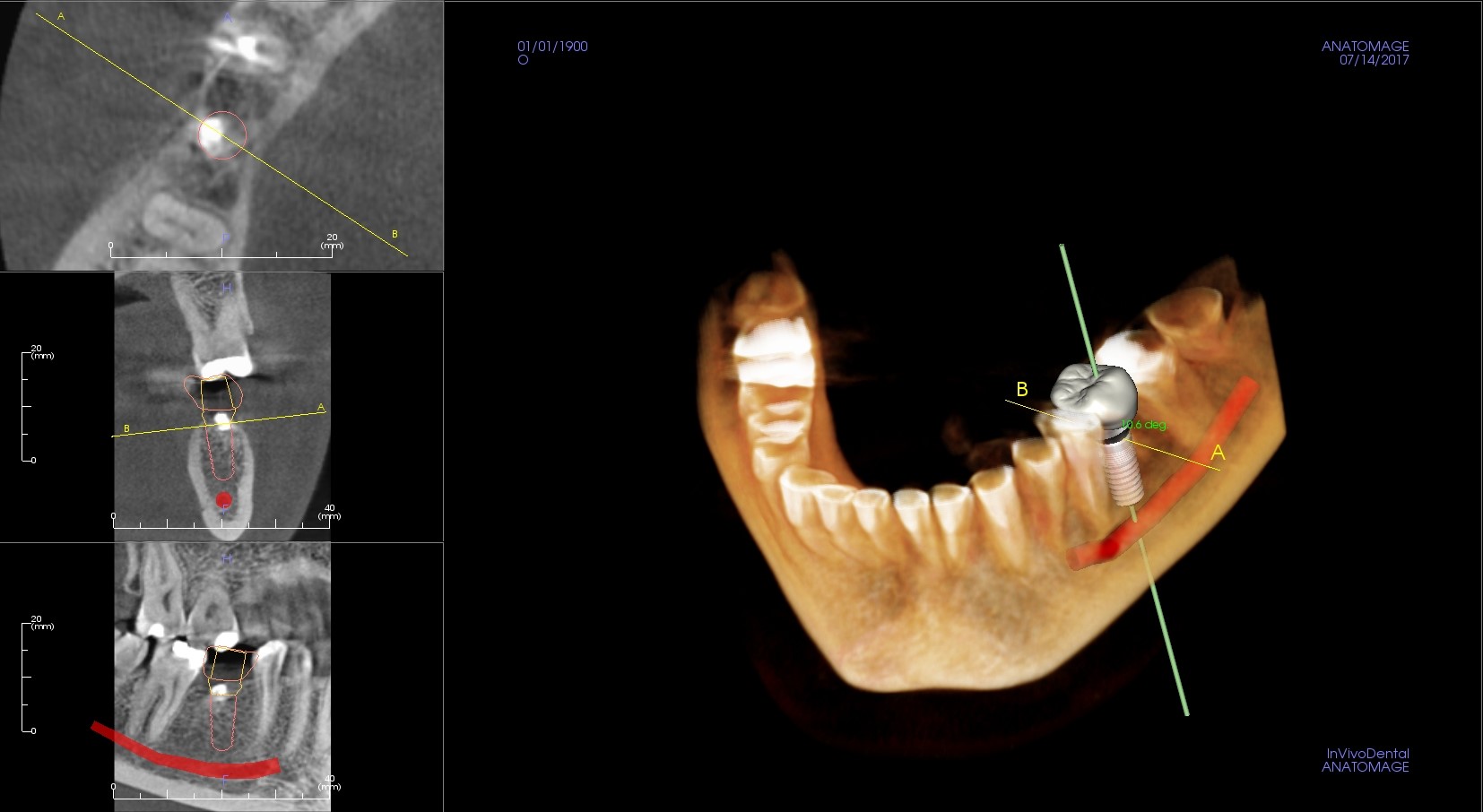
Replacing missing teeth with dental implants is a very appropriate solution for the toothless jaw, where the patient is usually only dependent on removable prostheses. With the help of a dental implant, it is possible to solve the loss of only one tooth and avoid the unpleasant grinding of healthy surrounding teeth for the bridge. The implant is a titanium bolt that is merged with the bone and allows the dentist to attach the crown to it, replacing the missing tooth. But how does such treatment work in practice?
Prior to the procedure, the physician first performs a detailed examination. An integral part of the examination is a 3D x-ray, which will allow us to carefully examine and measure the area of implantation. As a result, the physician can prevent possible complications during surgery. Based on the 3D analysis, the physician selects the appropriate implant and plans the operation in the software.
For a better idea, you can see how dental implants are planned. In this case, it is the denture of the left lower molar.
First, the physician will visualize the course of the nervous tissue bundle that runs inside the lower jaw. This structure is very important and must not be damaged during the procedure. It is therefore essential for the physician to have accurate information about where the nerve is going.
Then he or she chooses the ideal size of the dental implant and simulates placing the implant to the missing tooth position.
Whether the implant is in the ideal position can be verified by turning a three-dimensional model. For a complete idea of the future situation, he or she will still select a dental crown and check that the axis of the implant is at the center of the crown, which is a good prerequisite for the proper functioning of the bolted prosthetic. Such planning is followed by the procedure itself, where the whole situation is transferred into the mouth.


